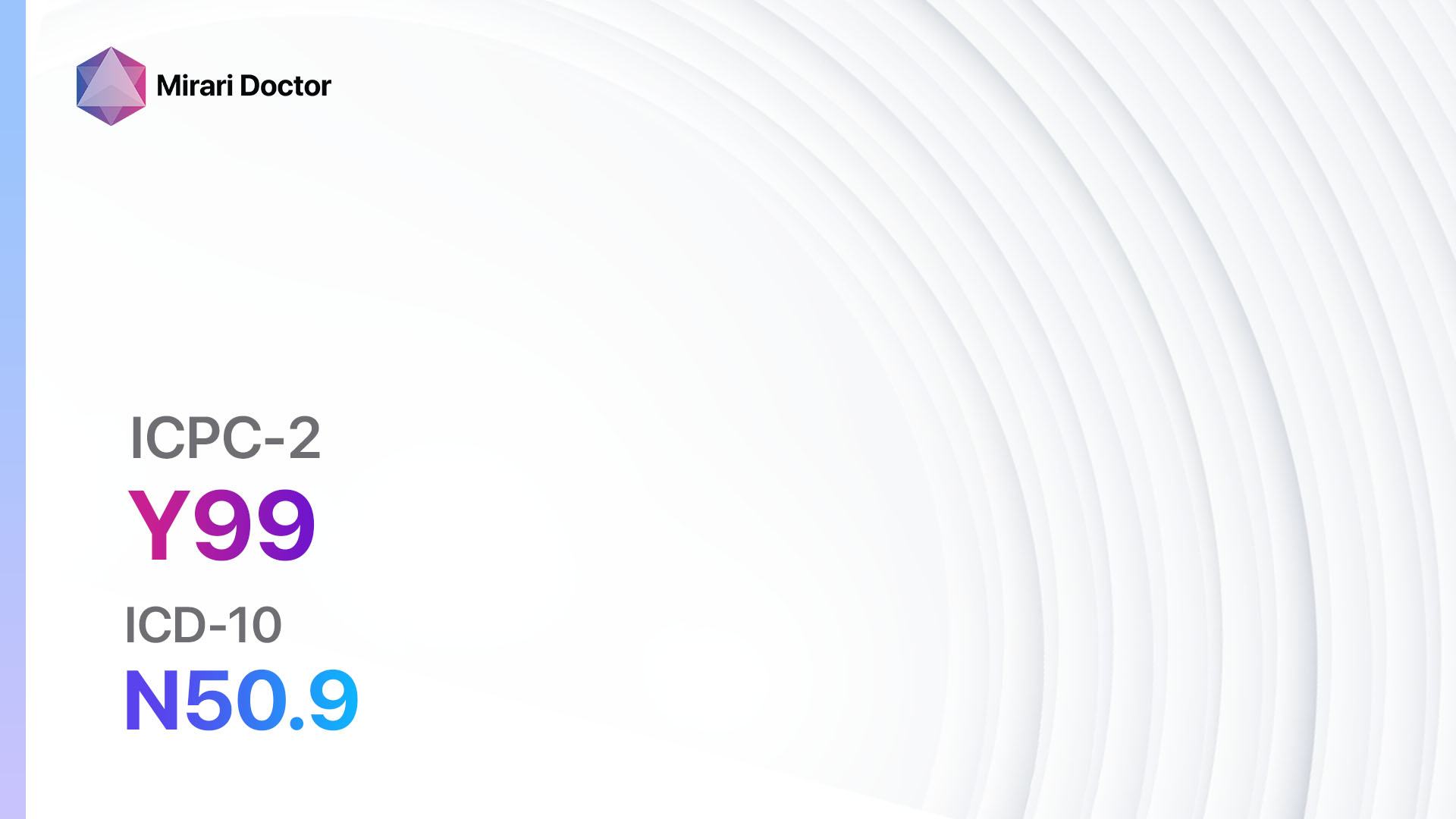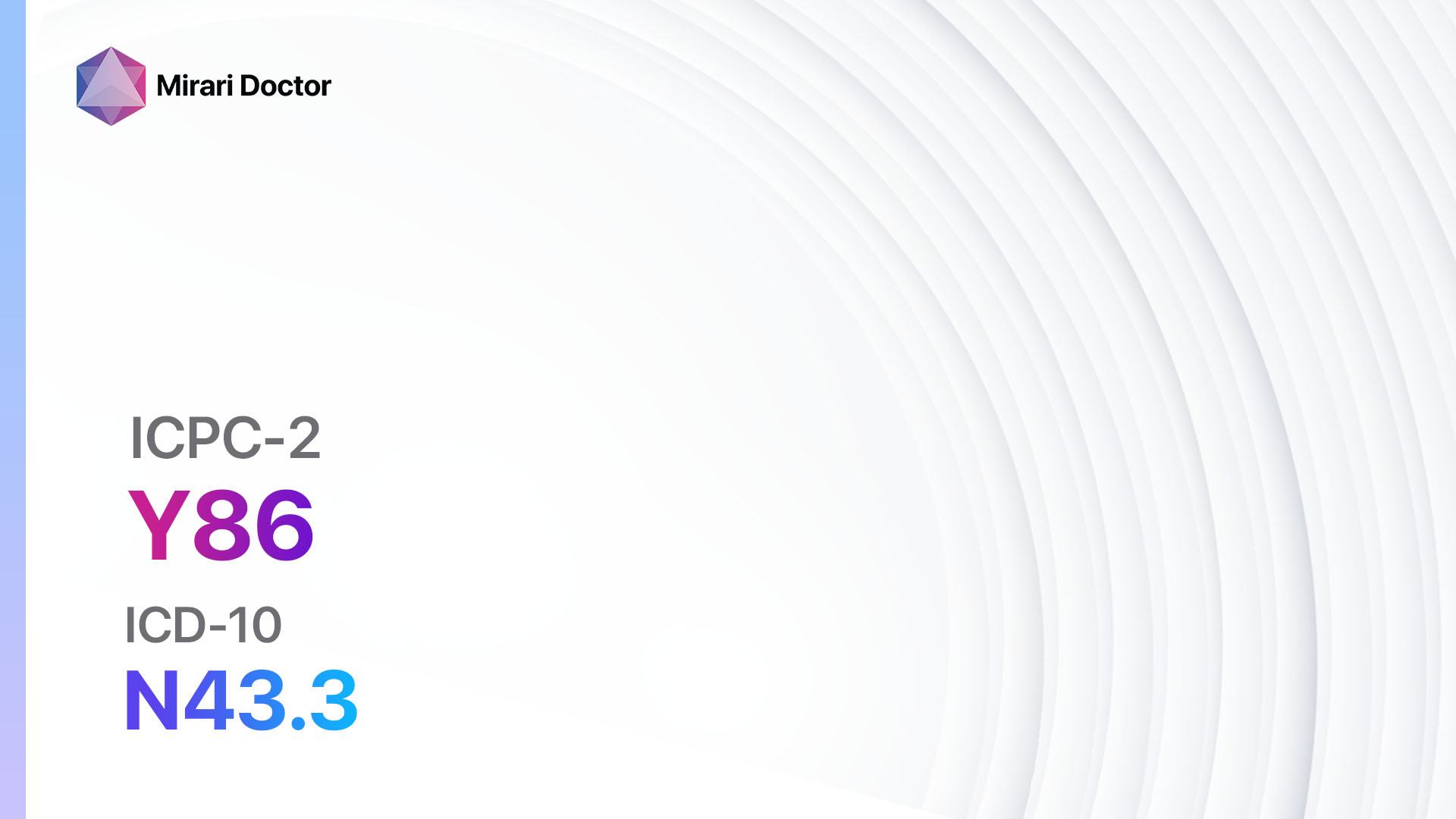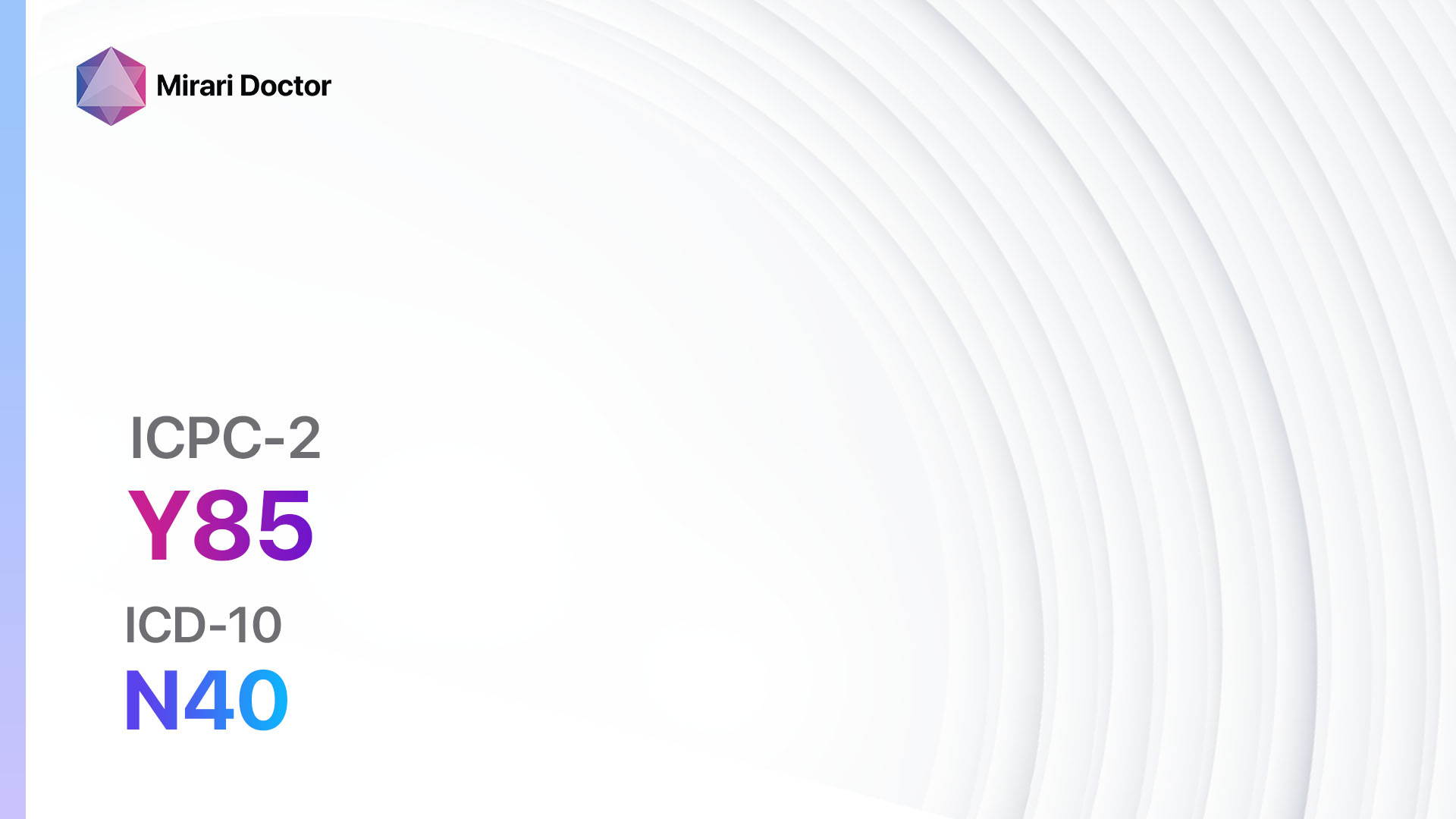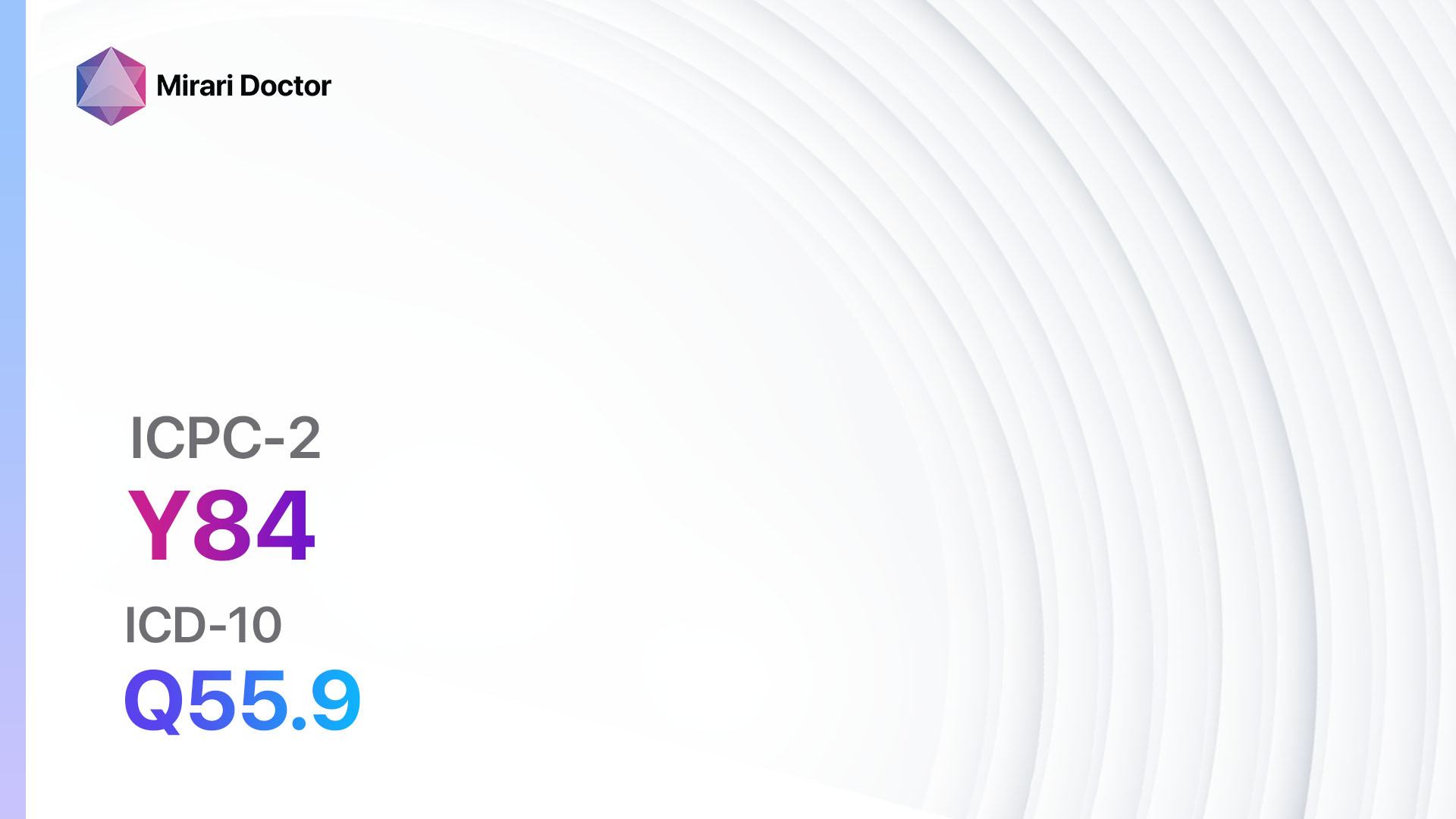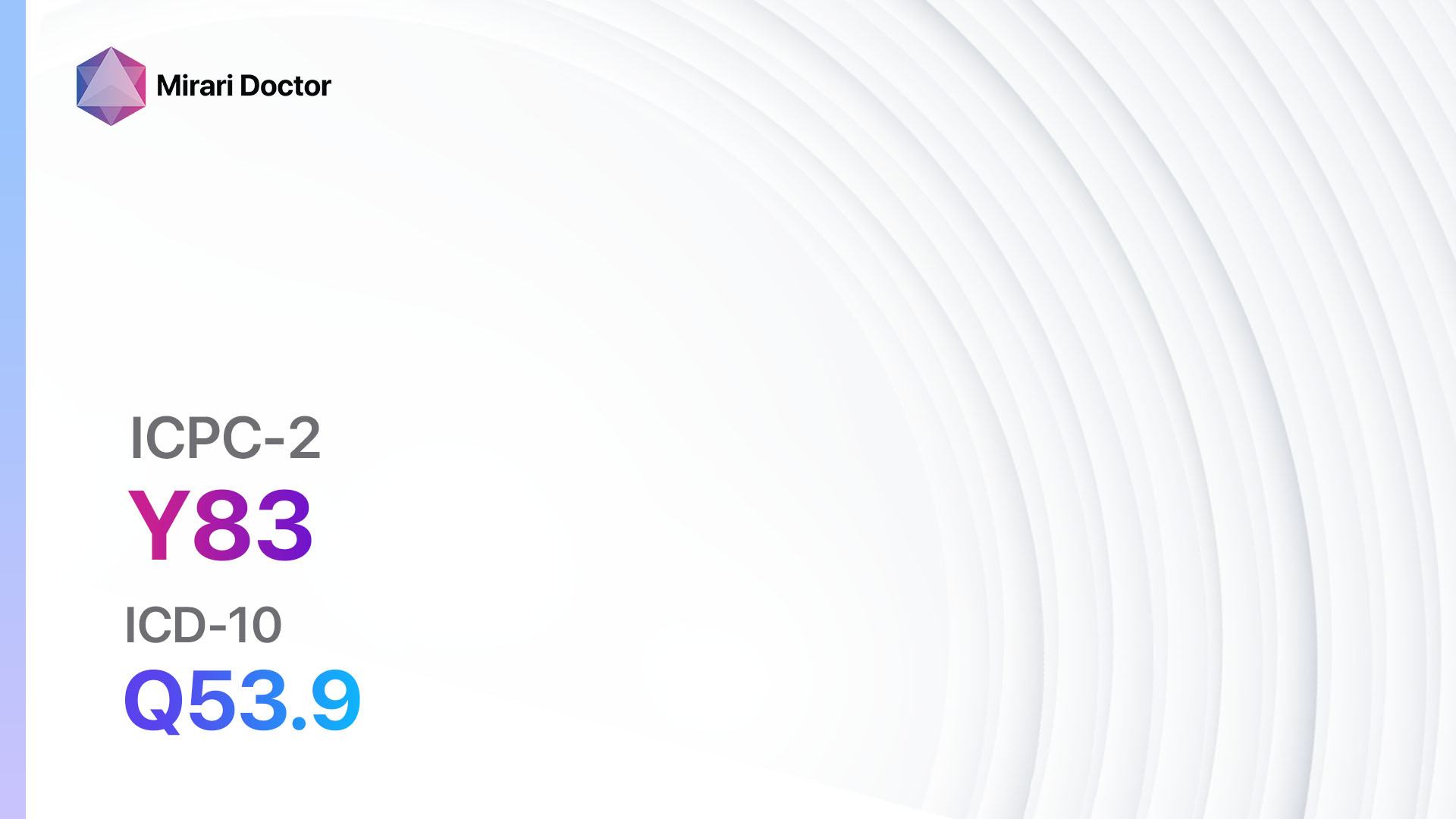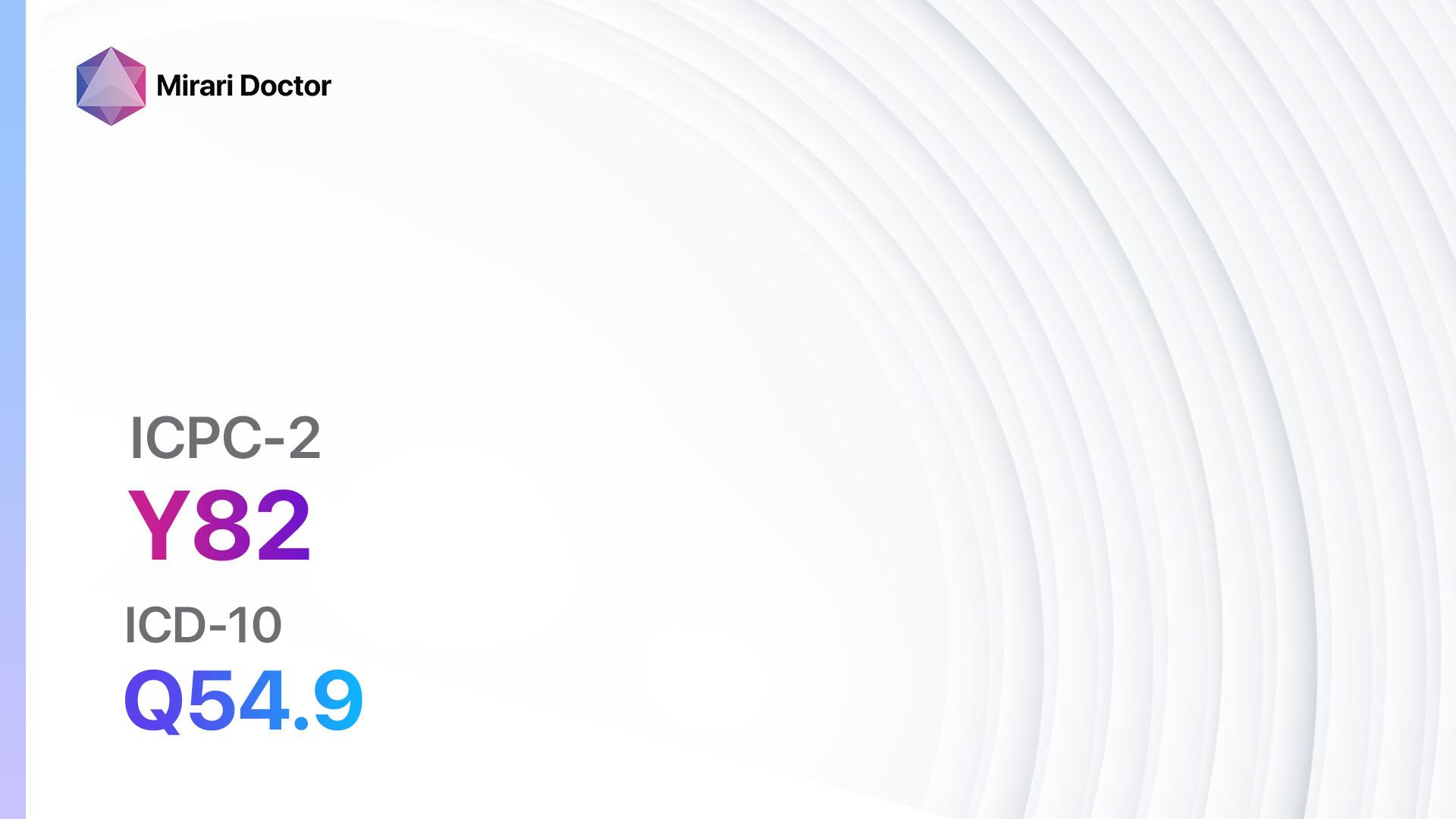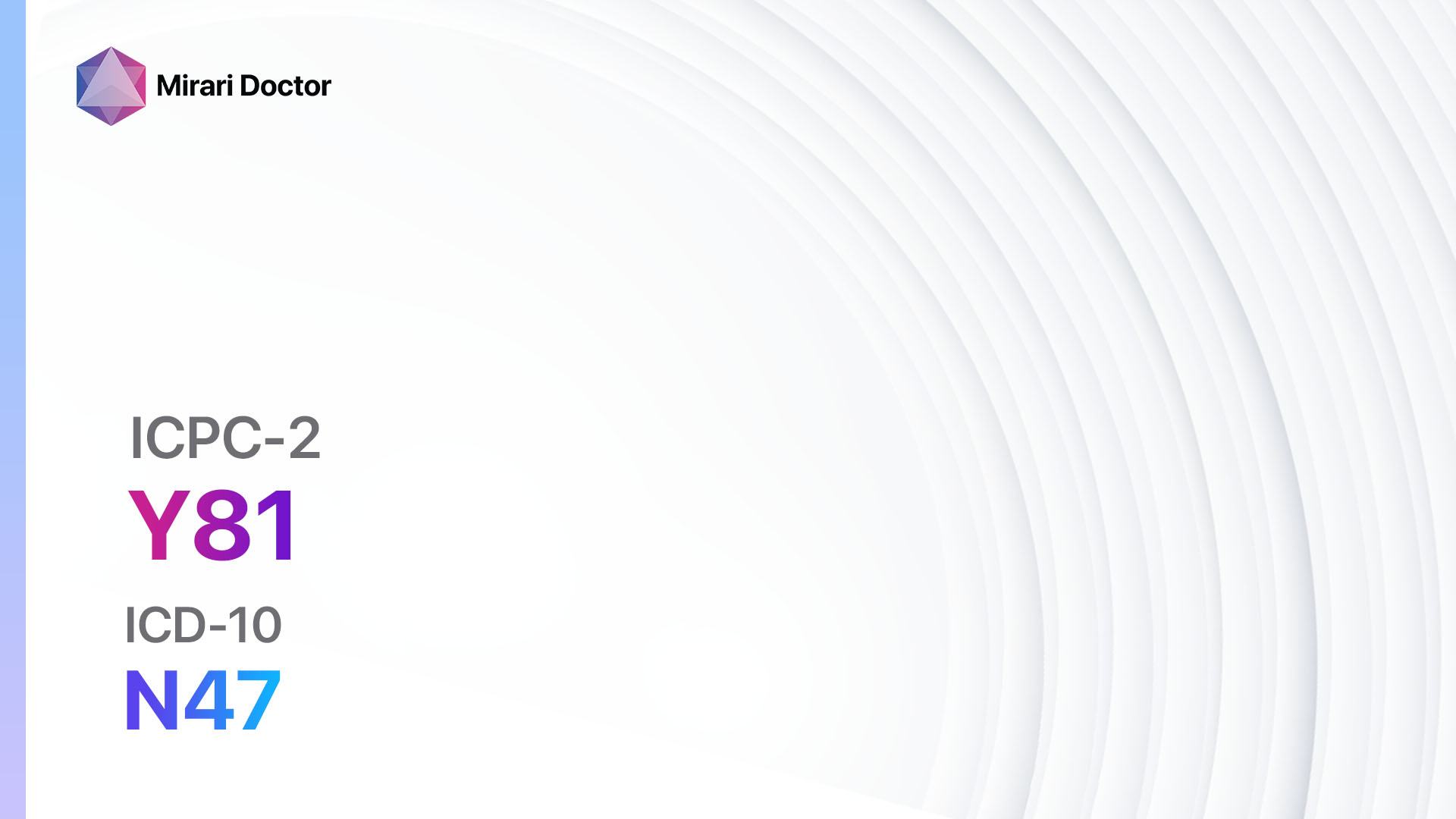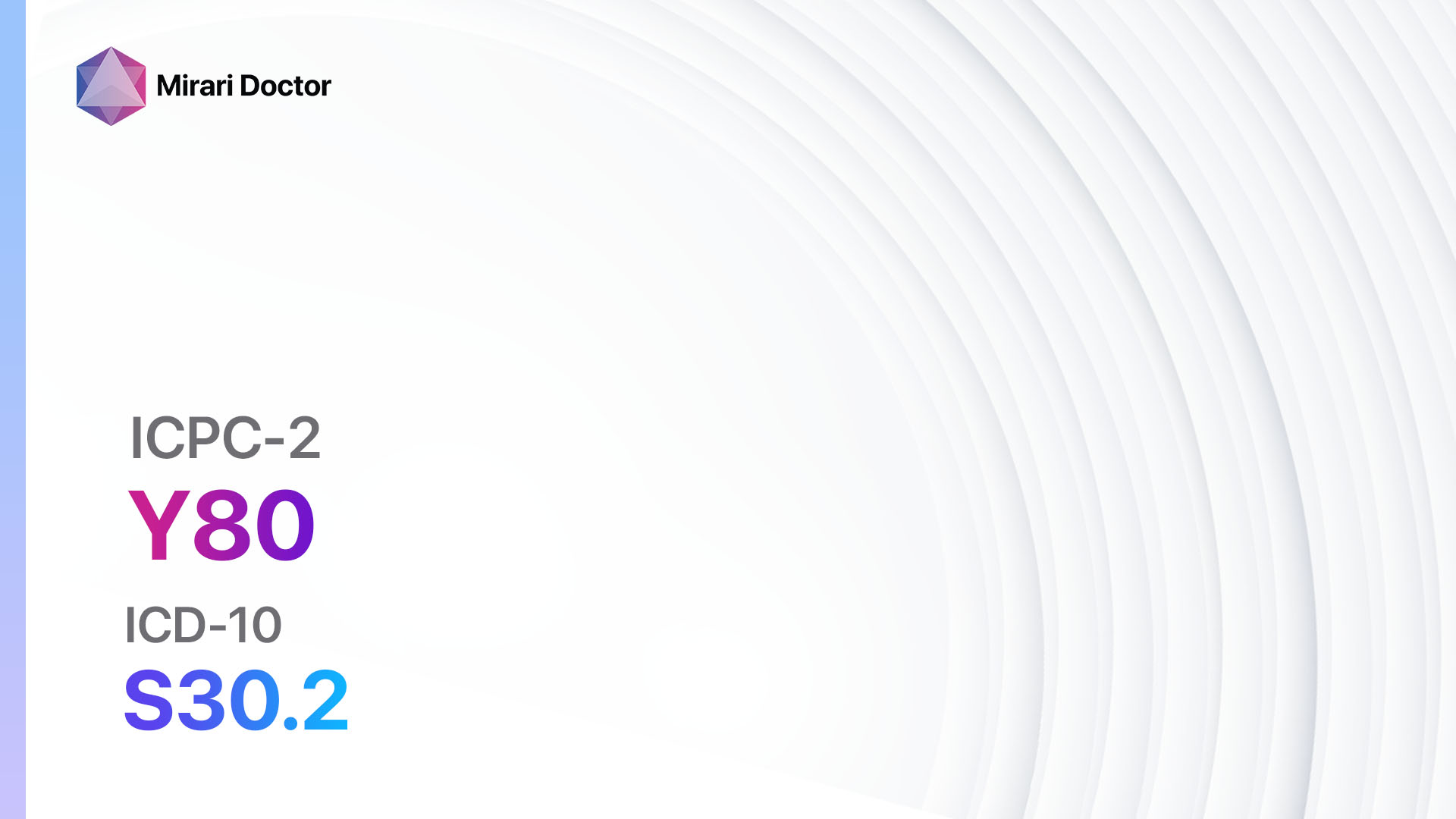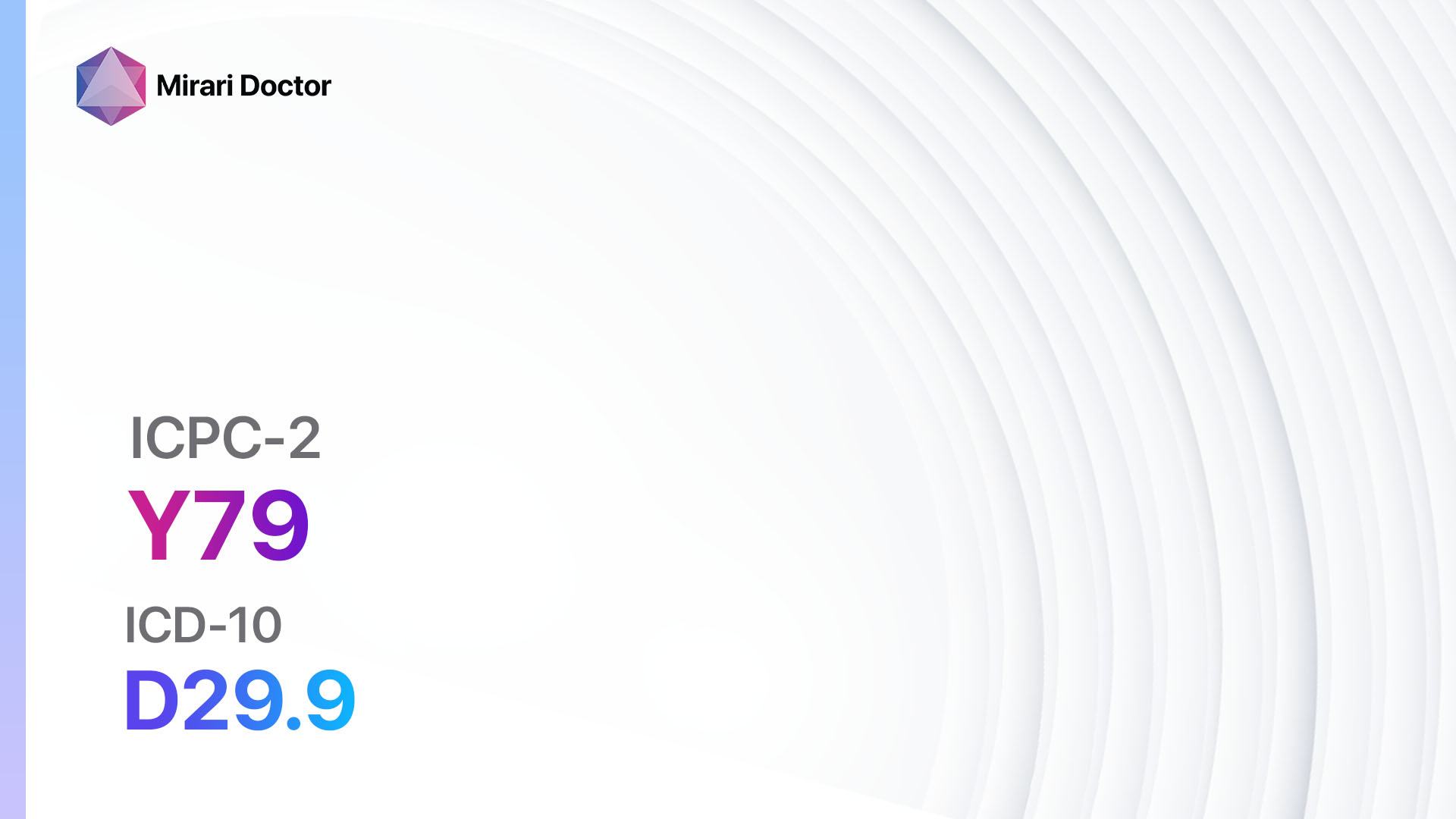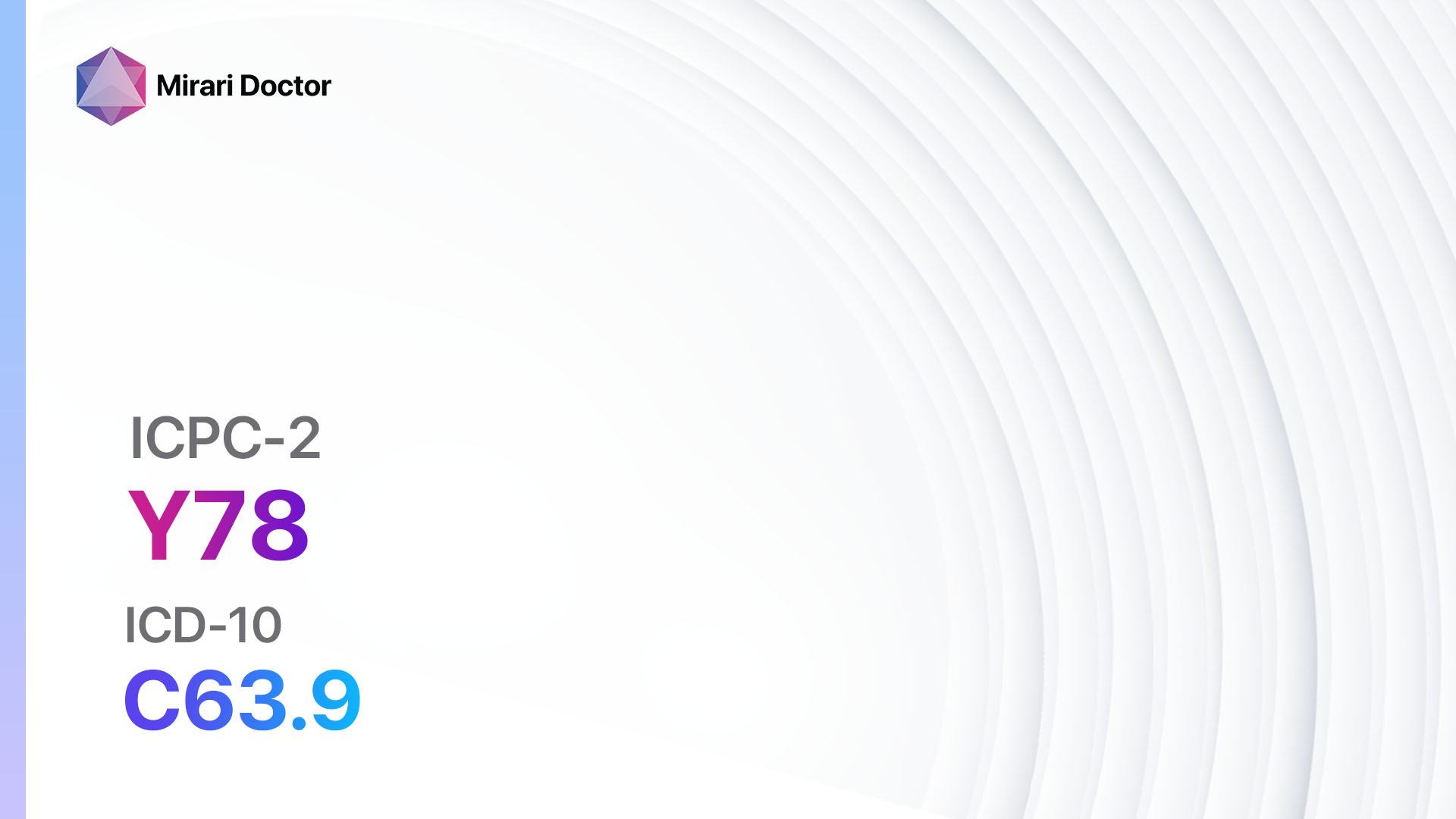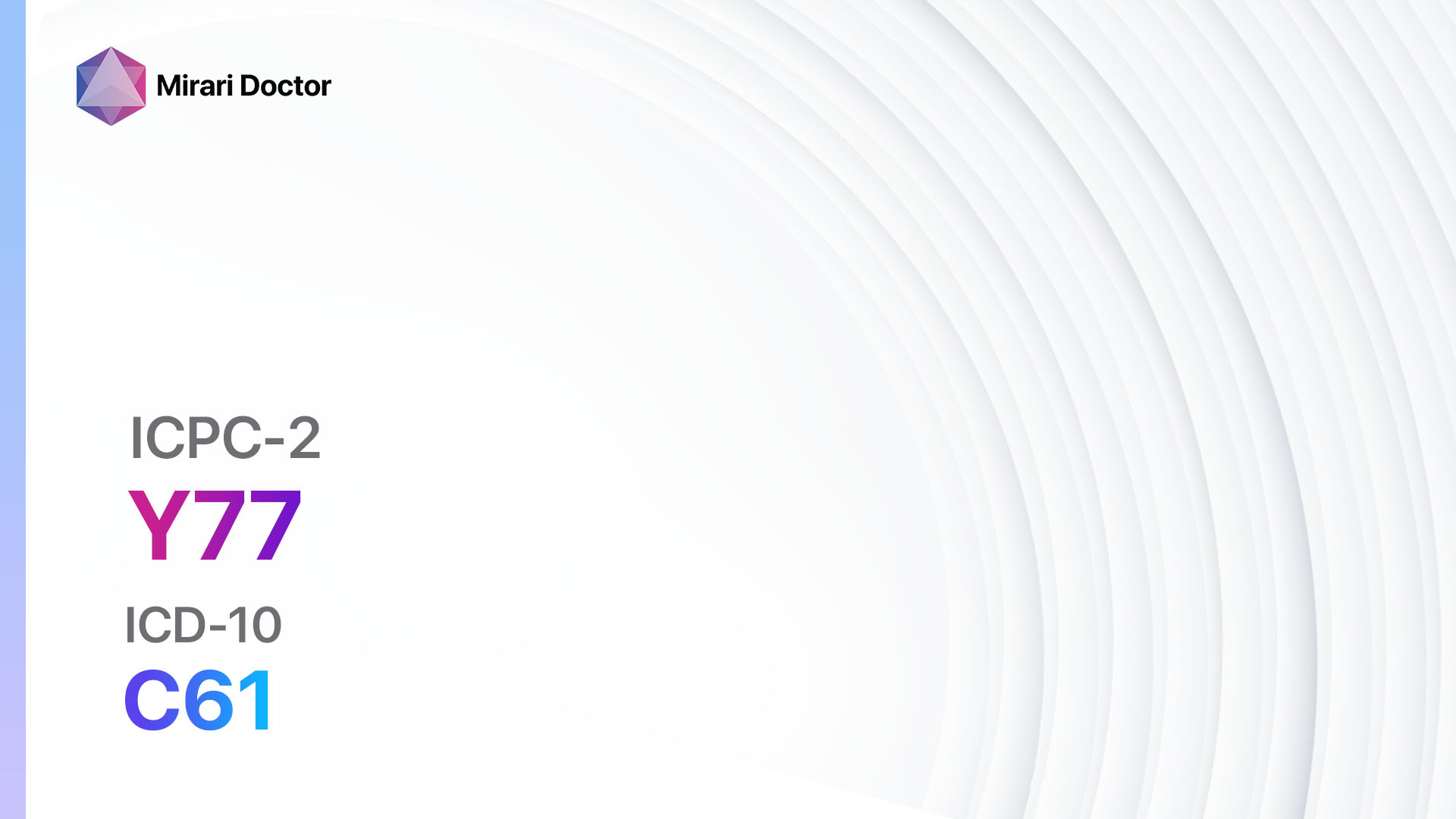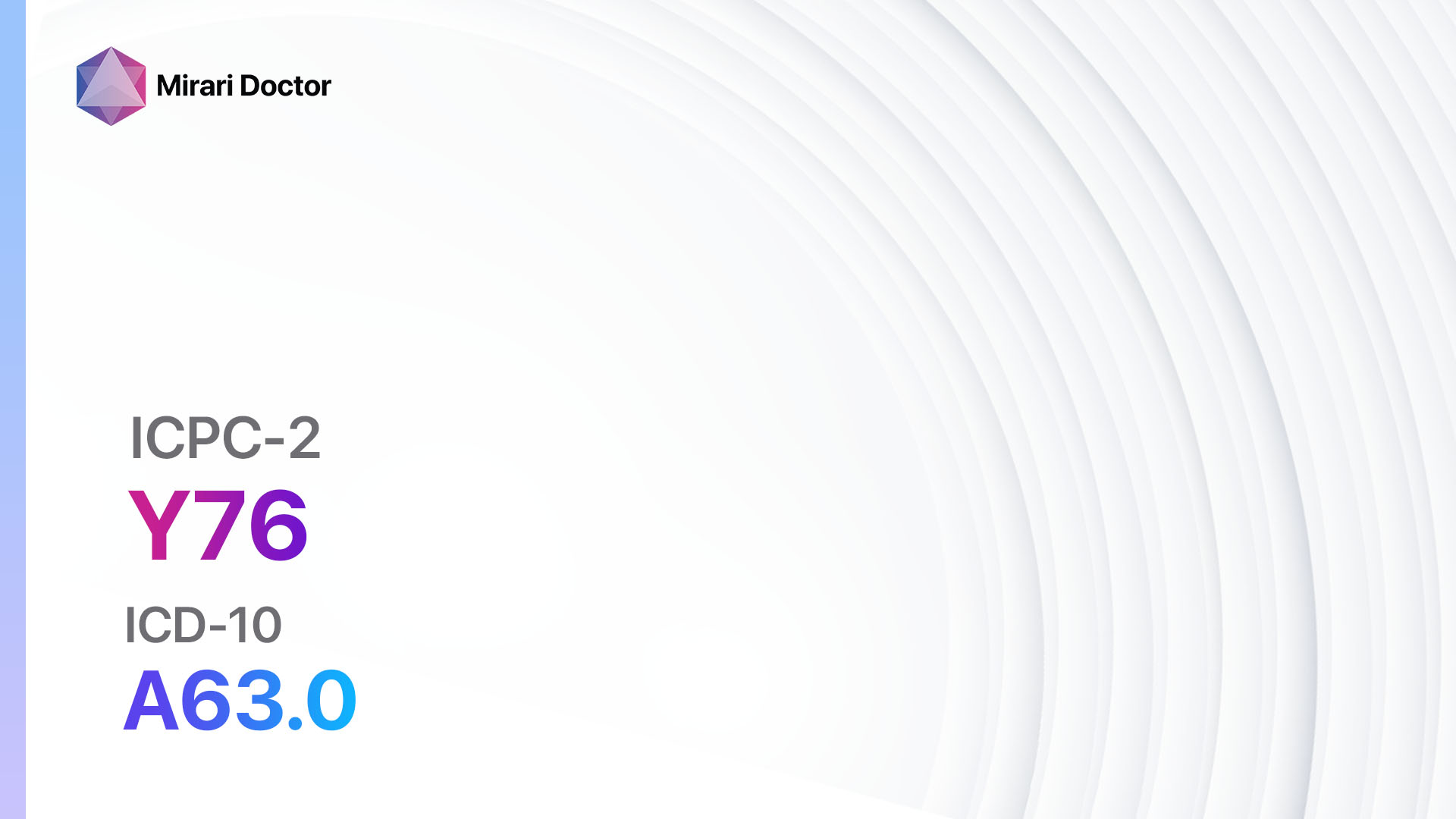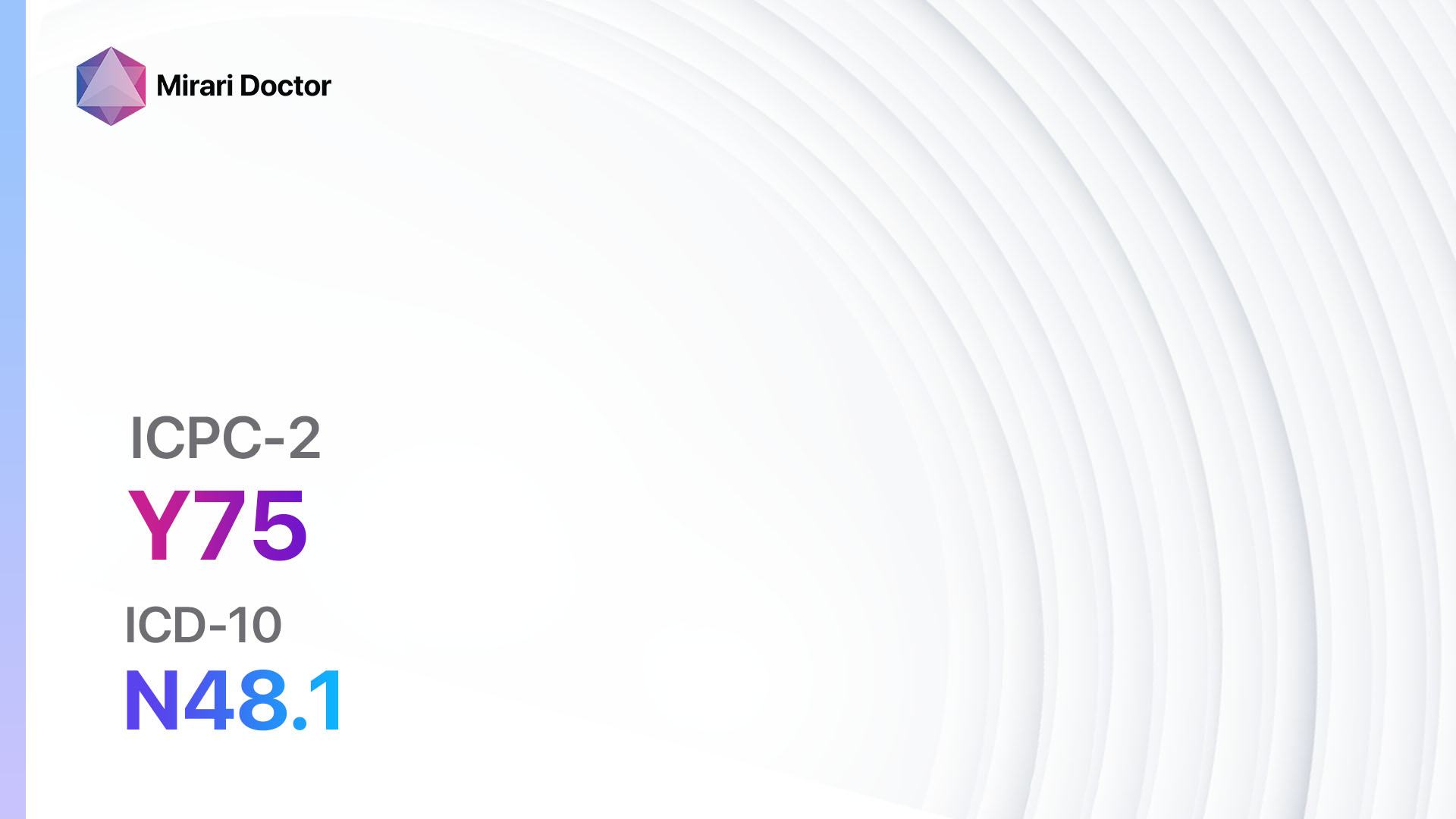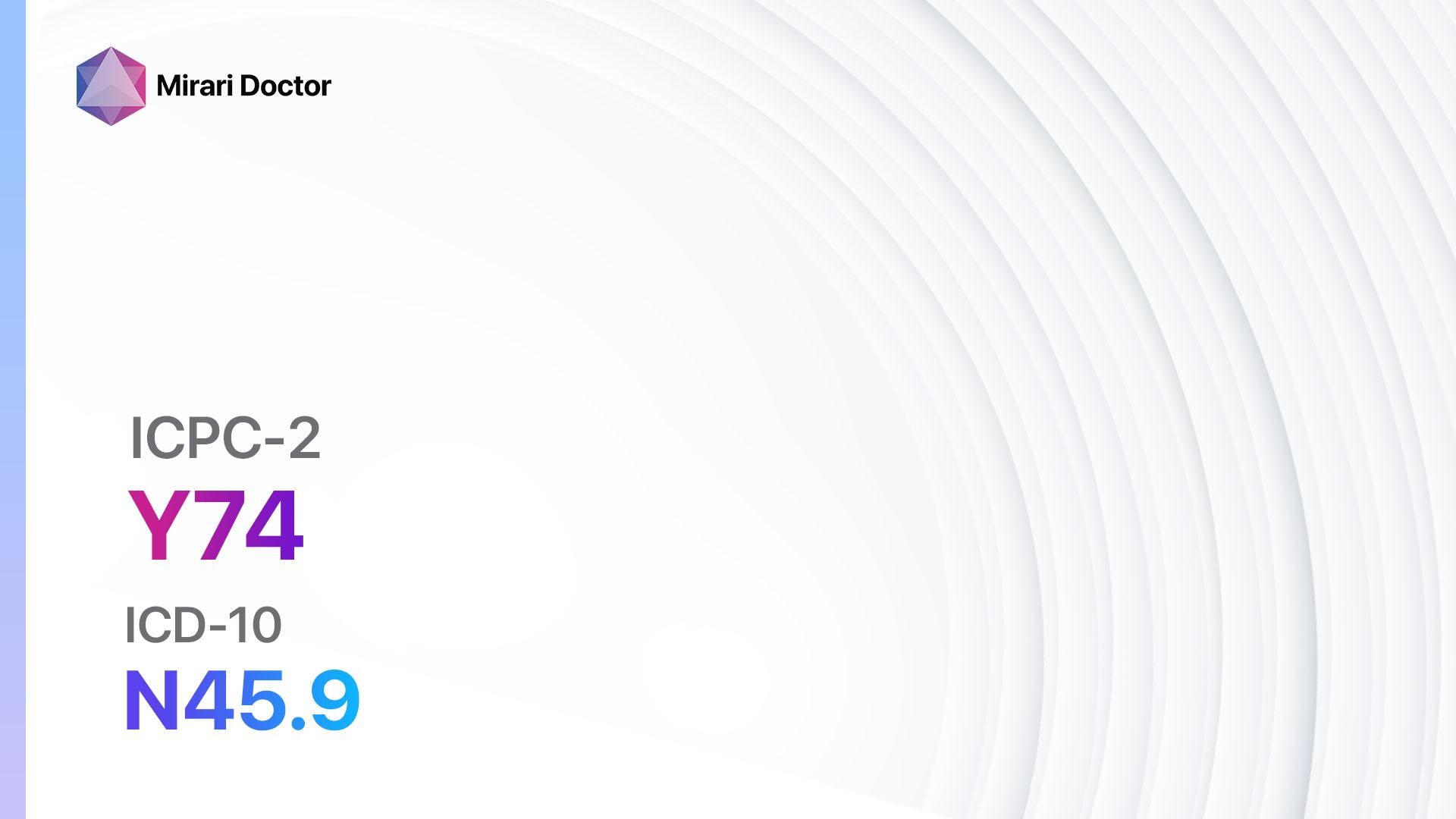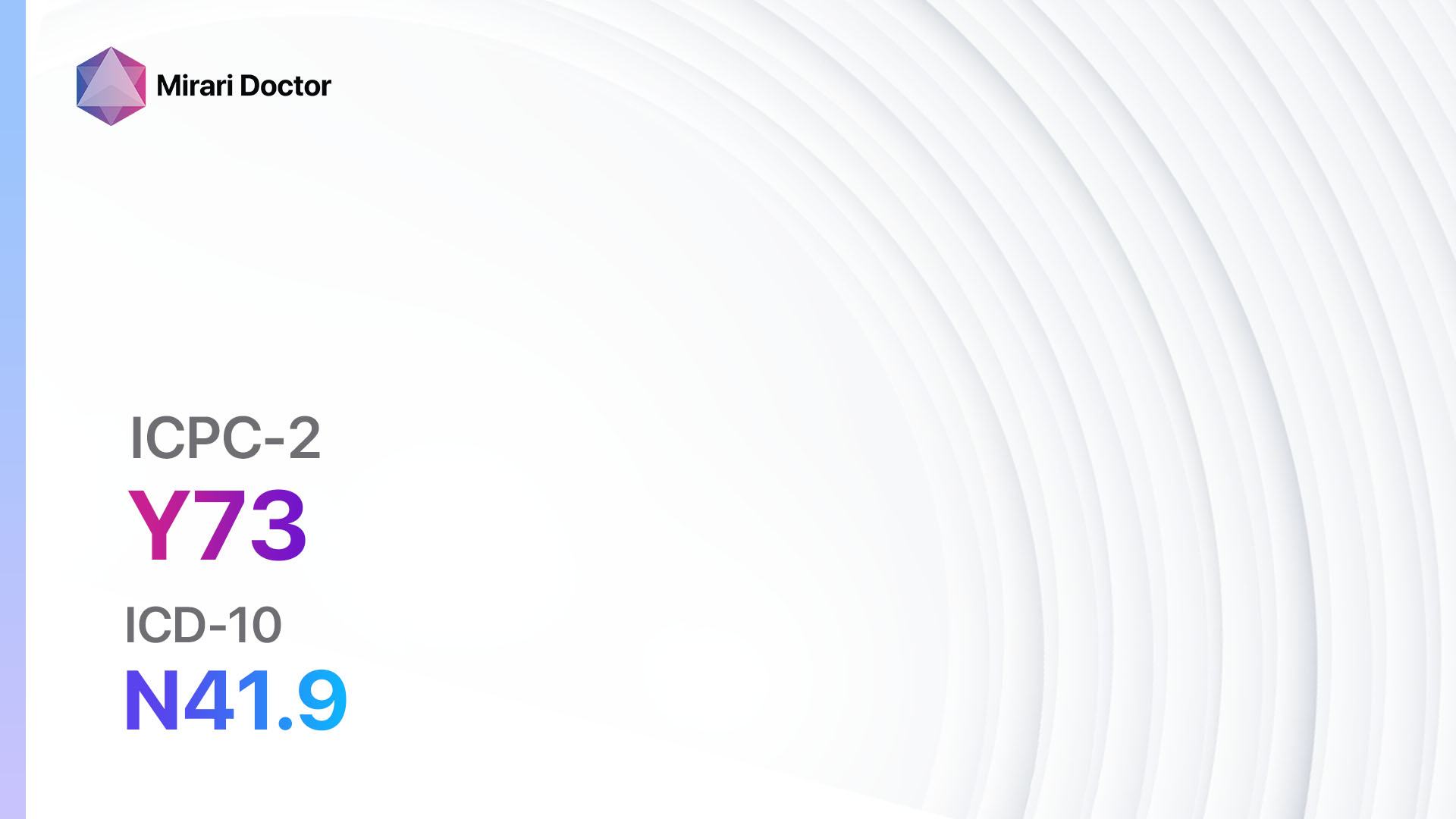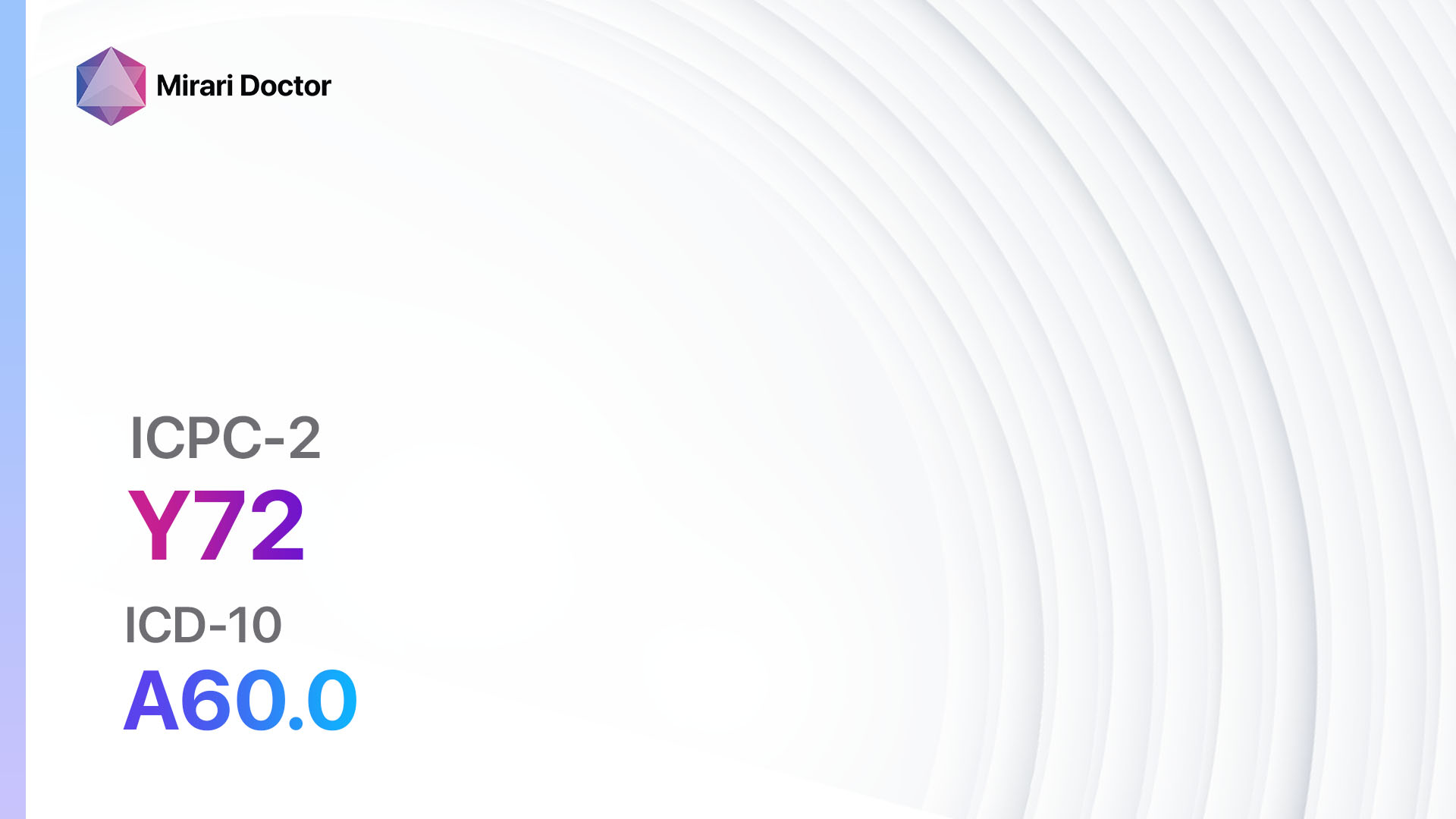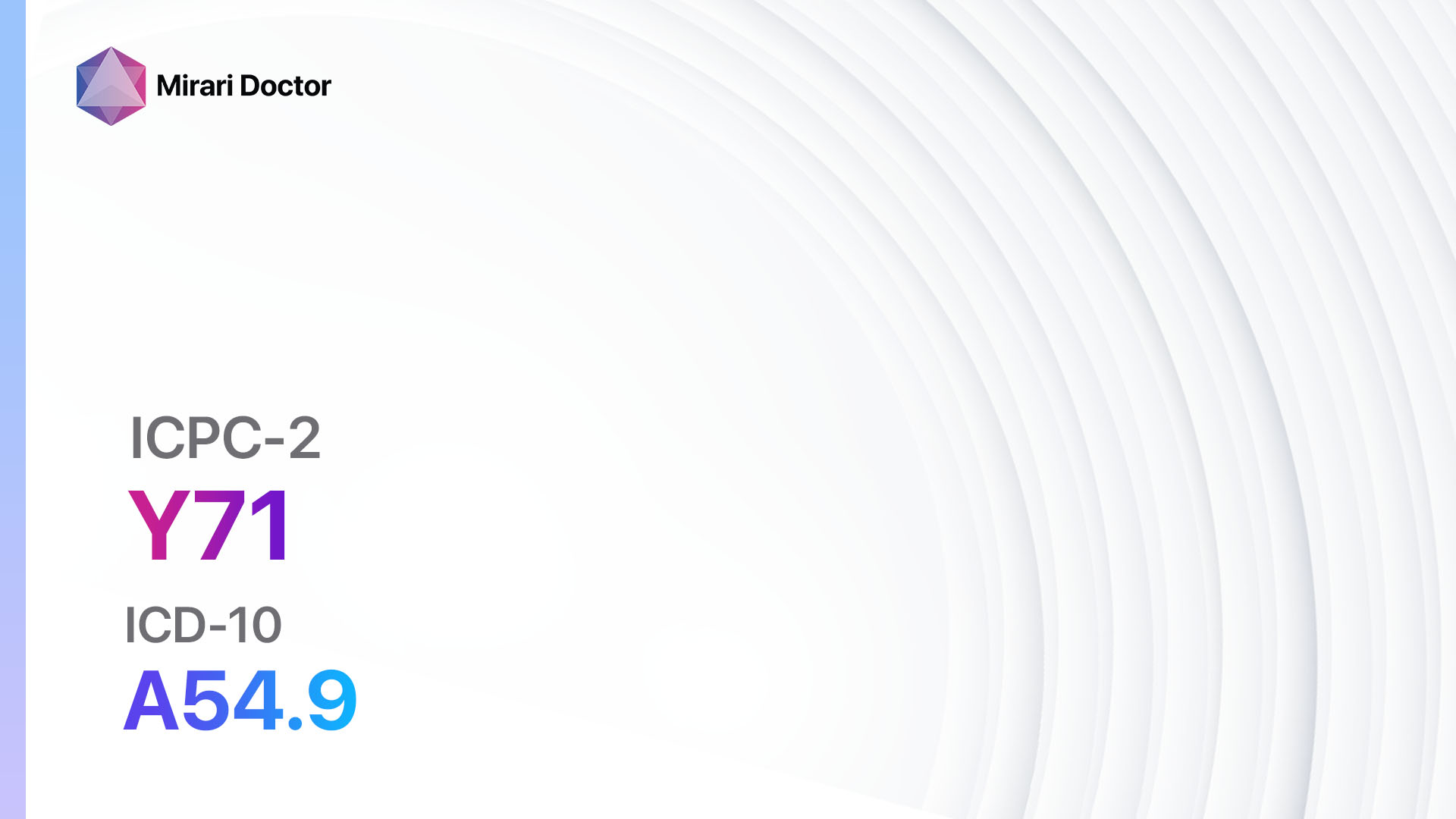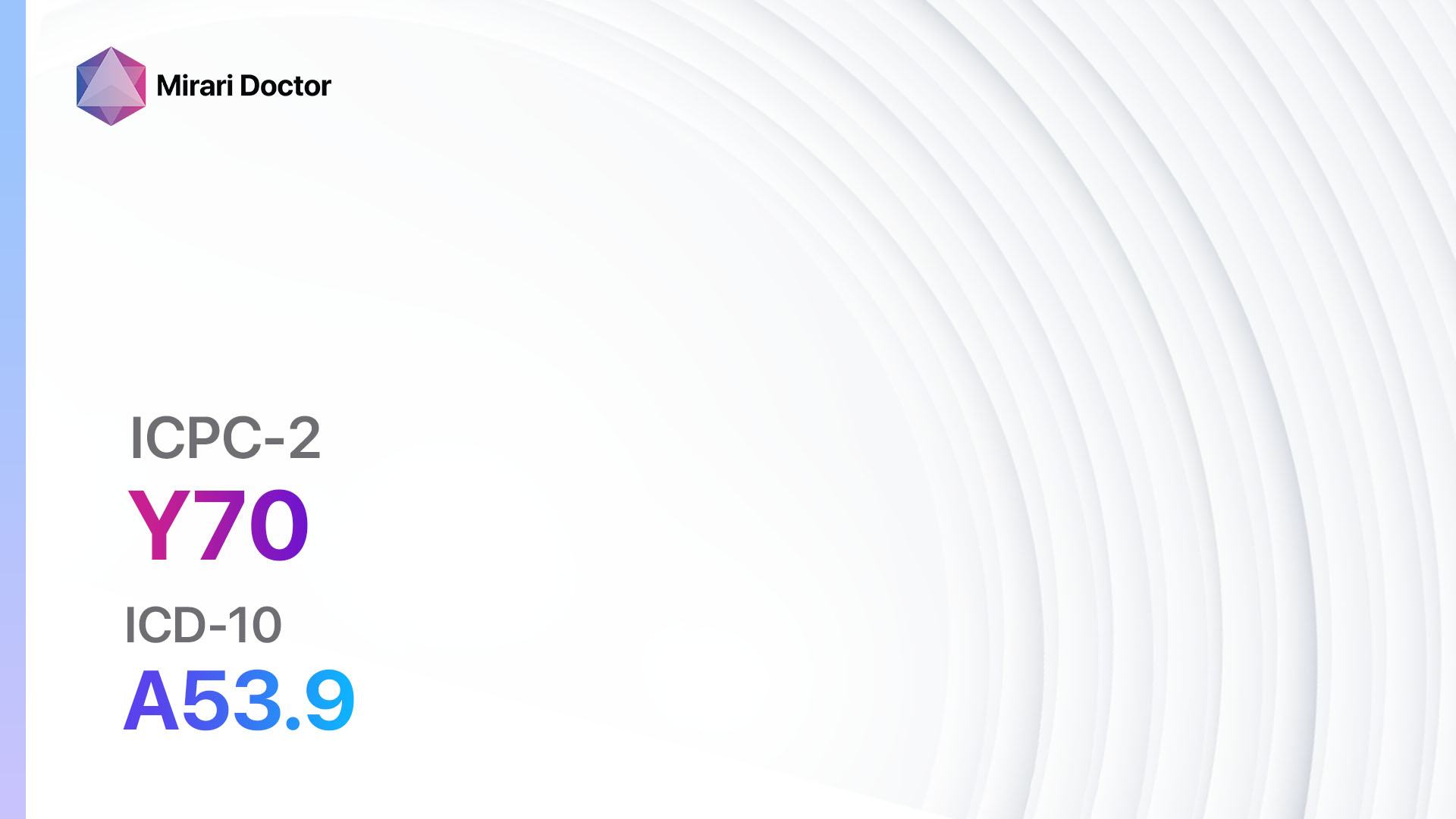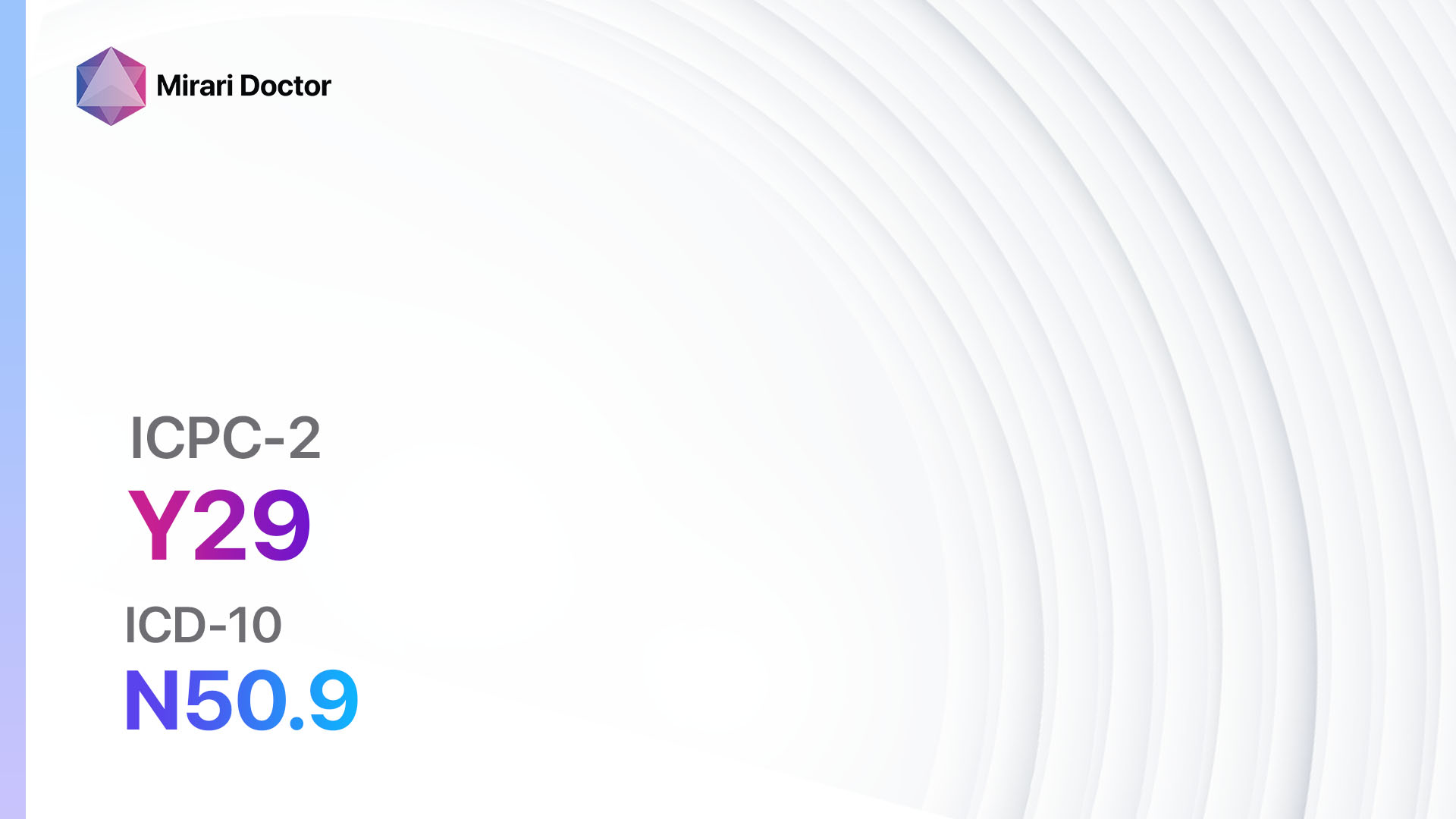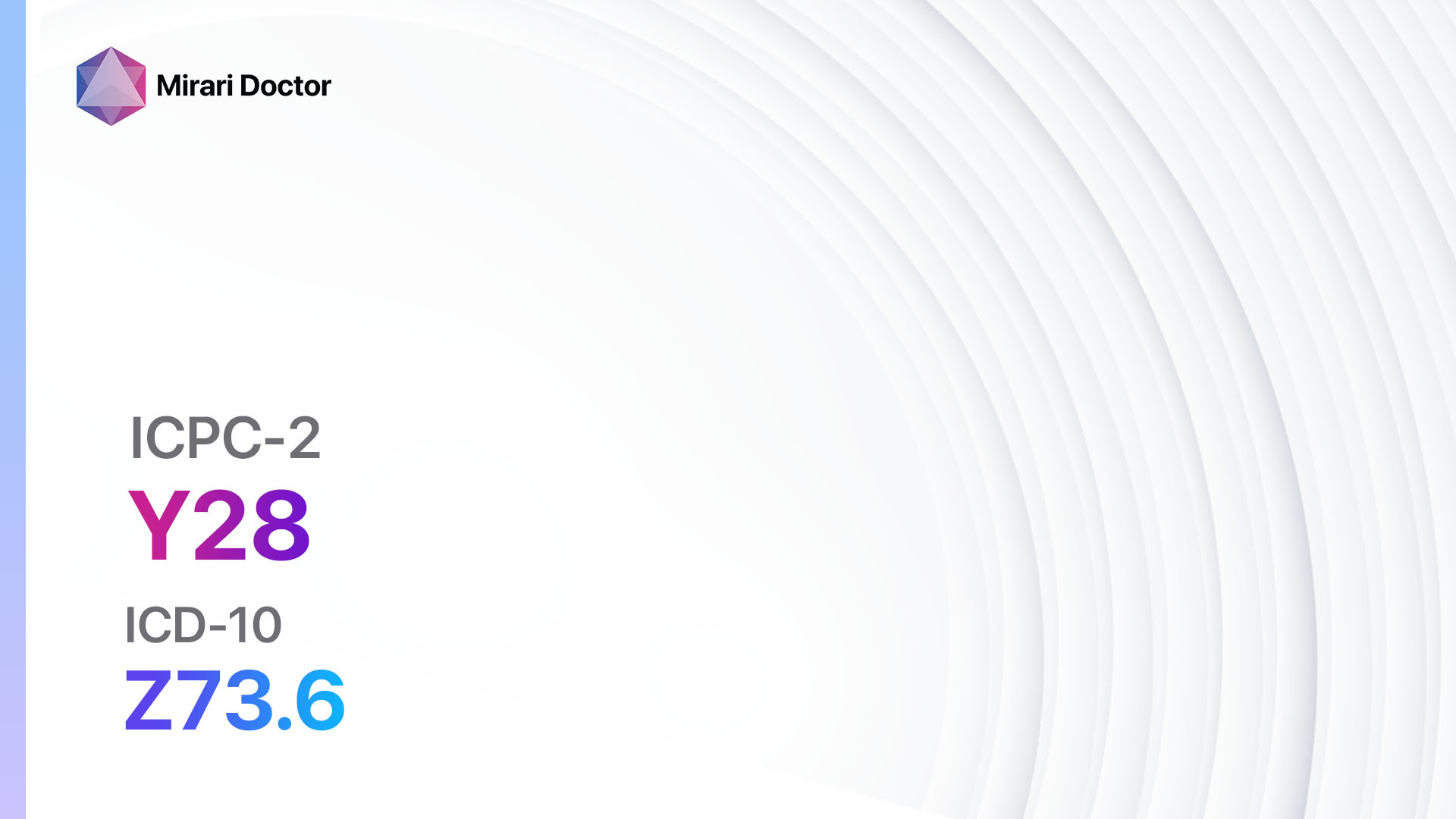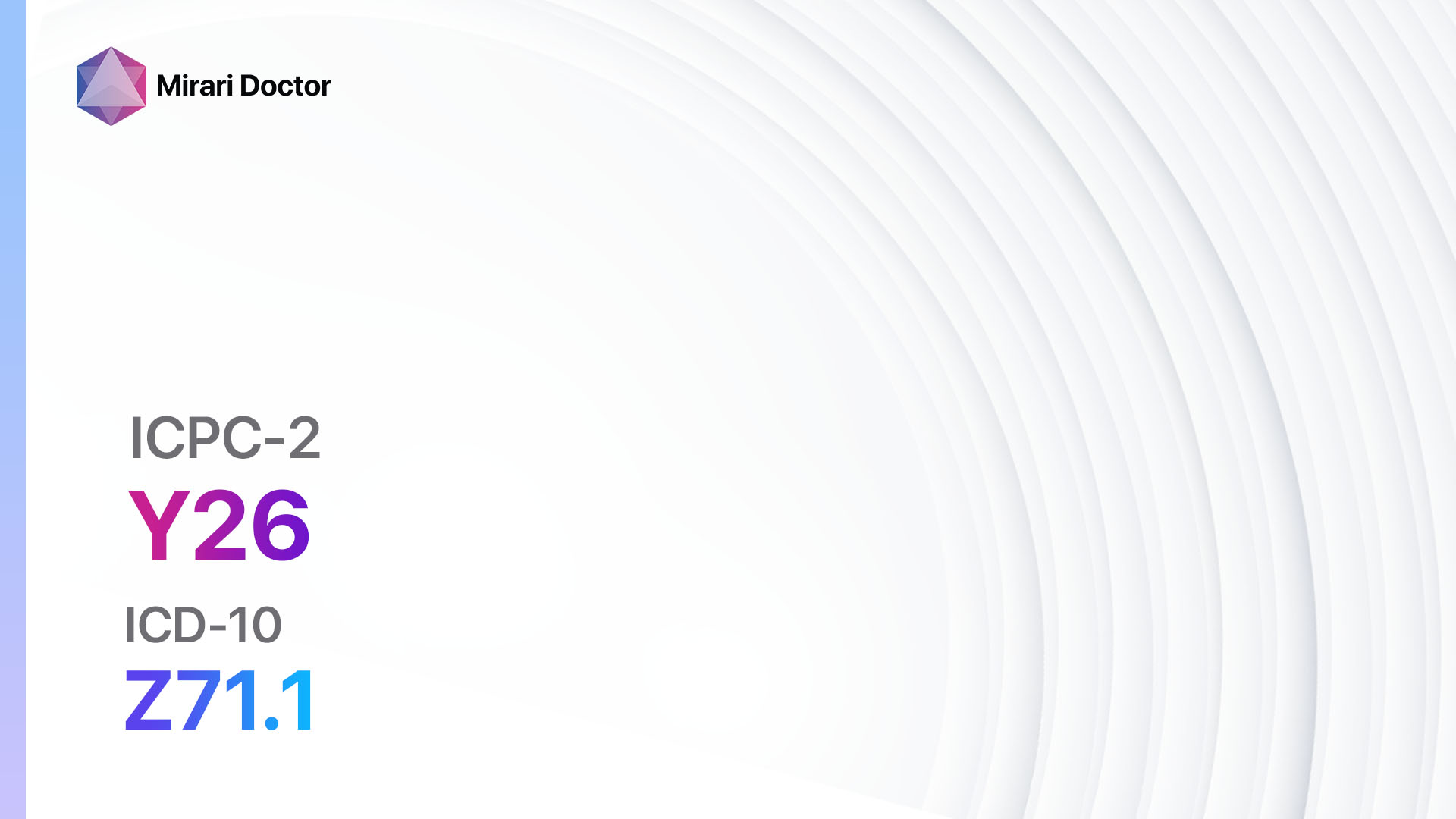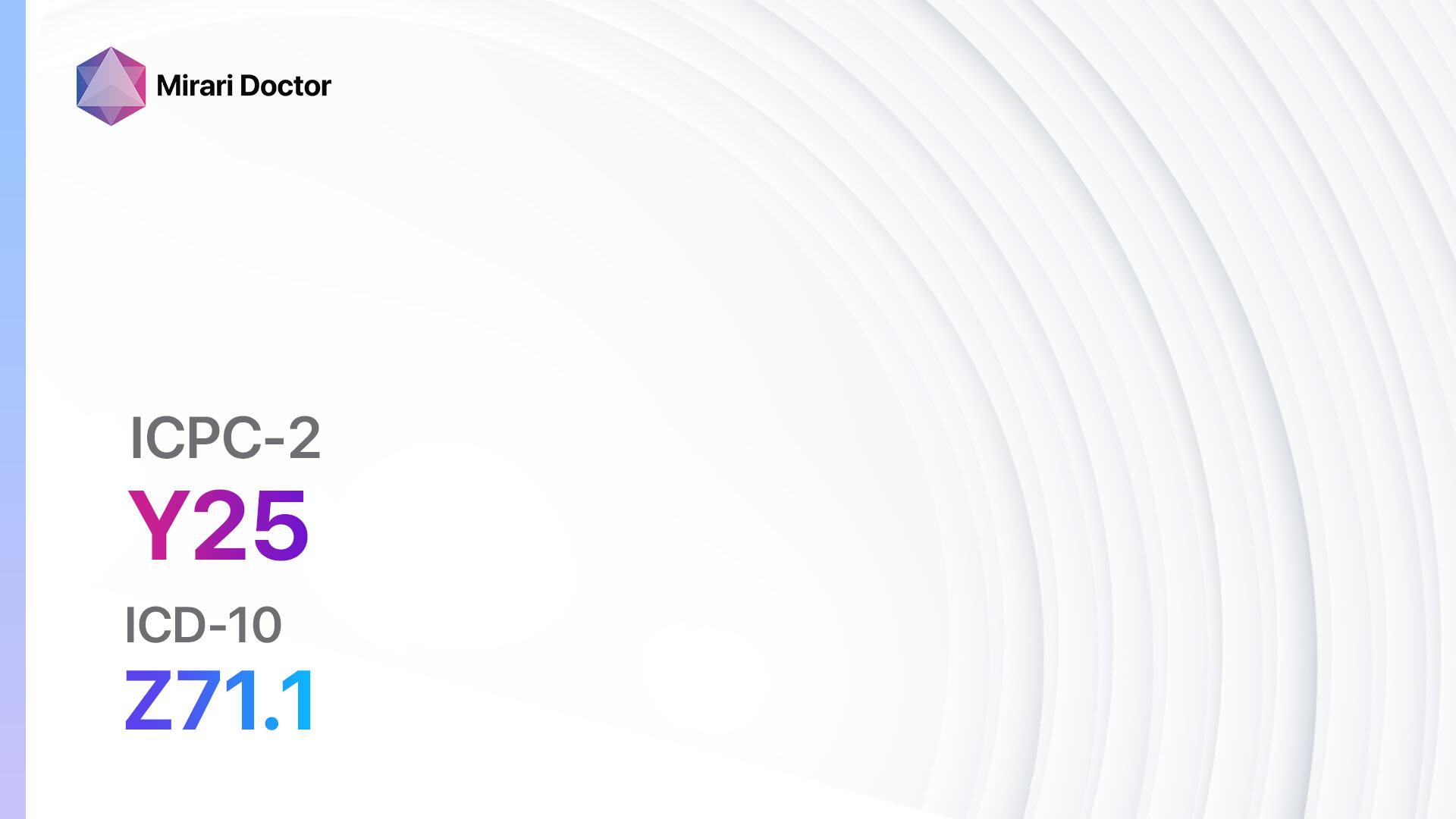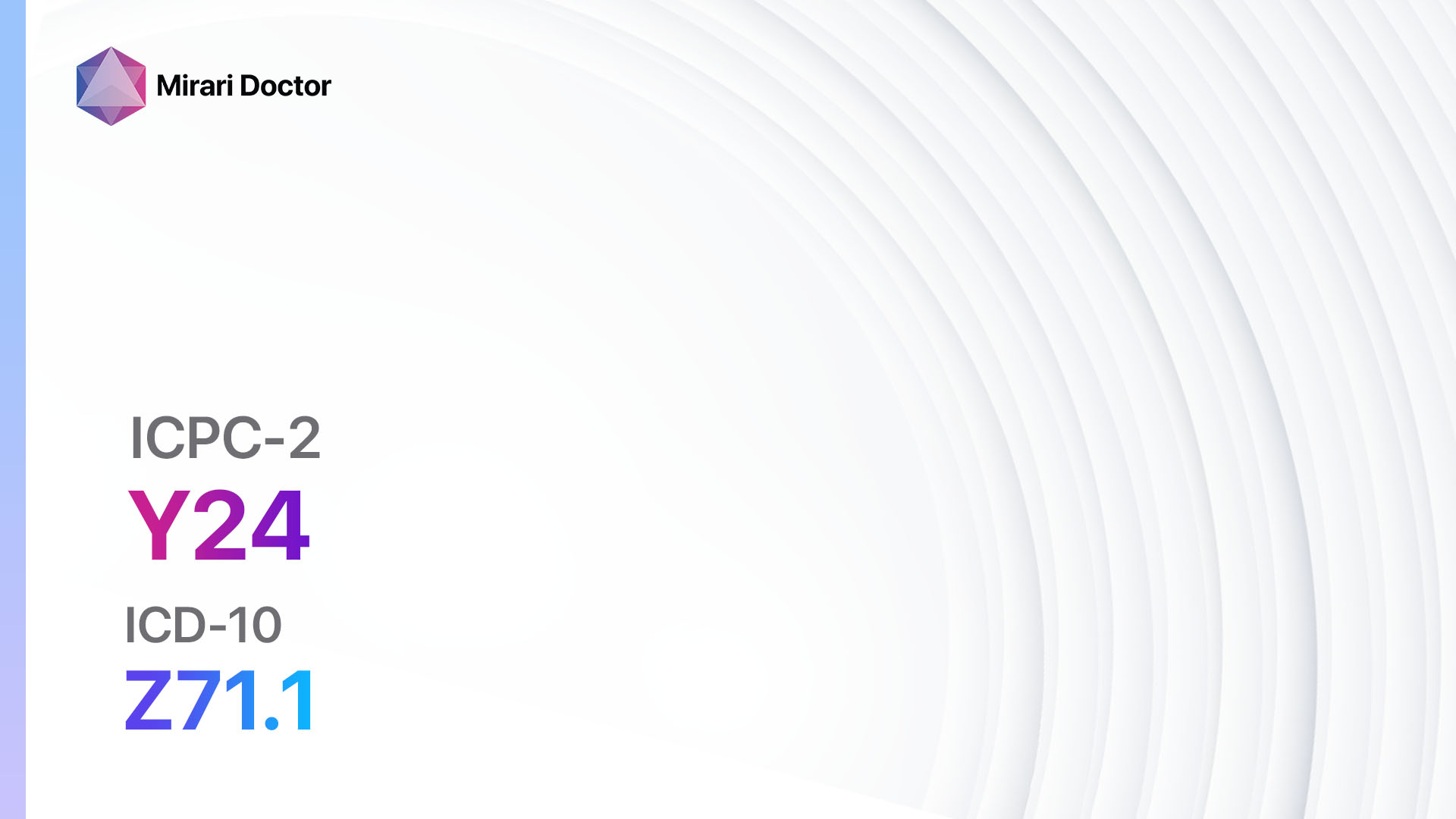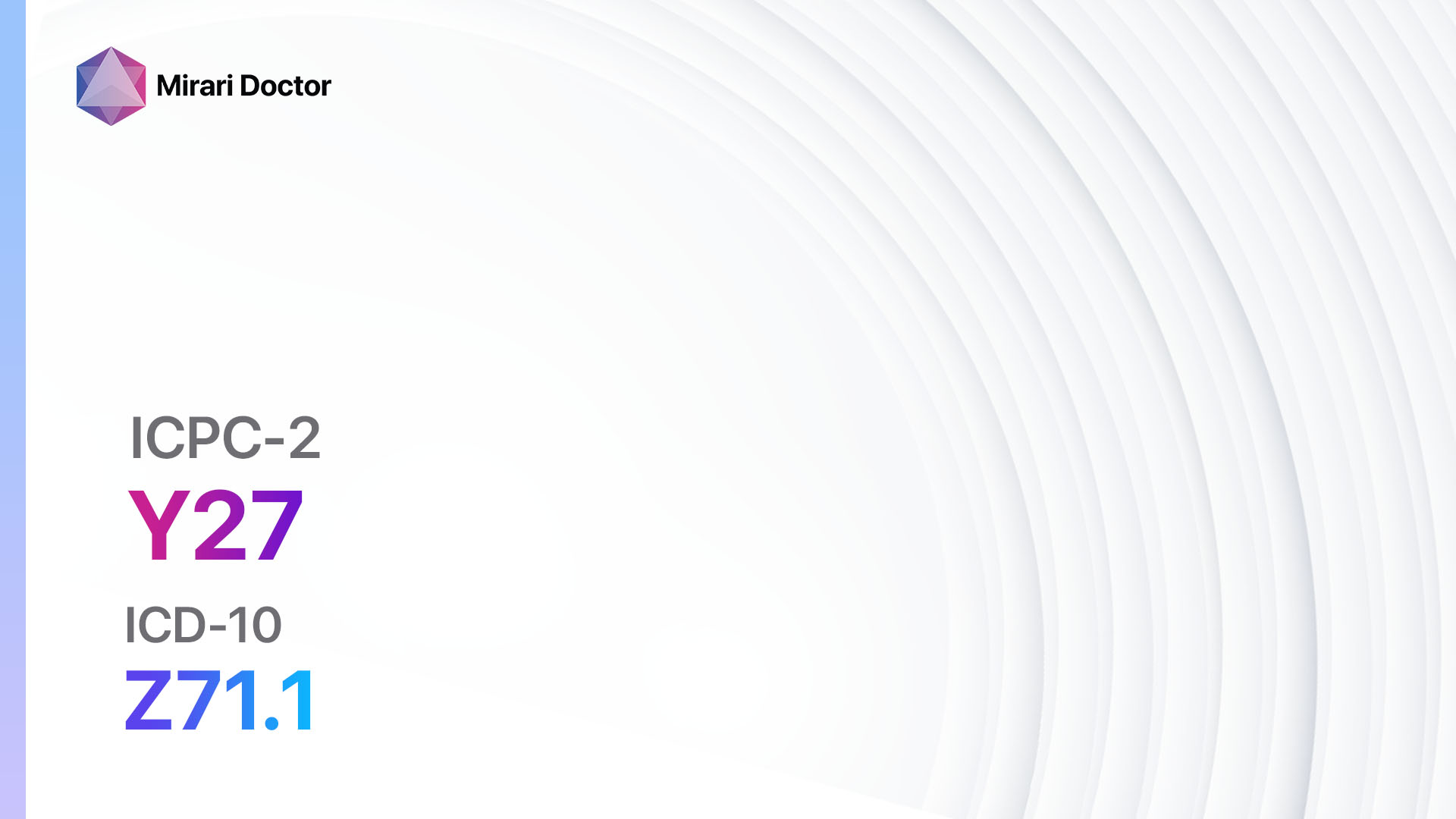
Introduction
Fear of genital disease in males is a common concern that can cause significant distress and anxiety. It is important to address these fears and provide appropriate education and support to patients. The aim of this guide is to outline the symptoms, causes, diagnostic steps, possible interventions, and lifestyle interventions for fear of genital disease in males.
Codes
- ICPC-2 Code: Y27 Fear of genital disease male other[1]
- ICD-10 Code: Z71.1 Person with feared complaint in whom no diagnosis is made[2]
Symptoms
- Fear of developing genital diseases
- Anxiety related to sexual health and genital health[3]
Causes
- Lack of knowledge or misinformation about genital diseases
- Previous traumatic experiences related to genital diseases
- Fear of the unknown or fear of the potential consequences of genital diseases[4]
Diagnostic Steps
Medical History
- Obtain a comprehensive medical history to understand the patient’s concerns, risk factors, and any previous experiences with genital diseases.
- Ask about any specific symptoms or concerns related to genital health.
- Inquire about any history of sexually transmitted infections or other genital diseases.[5]
Physical Examination
- Perform a thorough physical examination, focusing on the genital area.
- Look for any visible signs of infection or abnormalities.
- Check for any lumps, bumps, or lesions that may be indicative of genital diseases.[6]
Laboratory Tests
- No specific laboratory tests are required for the diagnosis of fear of genital disease. However, if there are specific symptoms or concerns, appropriate tests for the suspected disease may be recommended.[7]
Diagnostic Imaging
- Diagnostic imaging is not typically necessary for the diagnosis of fear of genital disease. However, if there are specific symptoms or concerns, imaging studies such as ultrasound or MRI may be ordered to rule out or confirm the presence of any abnormalities.[8]
Other Tests
- No other specific tests are required for the diagnosis of fear of genital disease. However, additional tests may be recommended based on the clinical presentation and specific concerns of the patient.[9]
Follow-up and Patient Education
- Schedule regular follow-up appointments to monitor the patient’s progress and address any ongoing concerns or questions.
- Provide patient education on genital health, including the importance of practicing safe sex, regular check-ups, and maintaining good hygiene.[10]
Possible Interventions
Traditional Interventions
Medications:
Top 5 drugs for fear of genital disease in males:
- Selective Serotonin Reuptake Inhibitors (SSRIs) (e.g., Sertraline, Fluoxetine):
- Cost: Generic versions can be $10-$50/month.
- Contraindications: Hypersensitivity to SSRIs, concurrent use of MAO inhibitors.
- Side effects: Nausea, insomnia, sexual dysfunction.
- Severe side effects: Serotonin syndrome, suicidal thoughts.
- Drug interactions: MAO inhibitors, NSAIDs.
- Warning: May take several weeks to see the full effect.
- Benzodiazepines (e.g., Lorazepam, Alprazolam):
- Cost: Generic versions can be $10-$50/month.
- Contraindications: Hypersensitivity to benzodiazepines, history of substance abuse.
- Side effects: Sedation, dizziness, confusion.
- Severe side effects: Respiratory depression, dependence.
- Drug interactions: Alcohol, opioids.
- Warning: Risk of dependence and withdrawal symptoms.
- Beta-blockers (e.g., Propranolol, Atenolol):
- Cost: Generic versions are typically <$30/month.
- Contraindications: Severe bradycardia, heart block.
- Side effects: Fatigue, dizziness, impotence.
- Severe side effects: Bronchospasm, heart failure.
- Drug interactions: Calcium channel blockers, insulin.
- Warning: Should not be abruptly stopped.
- Cognitive Behavioral Therapy (CBT):
- Cost: Varies depending on the therapist and location, typically $100-$250 per session.
- Contraindications: None.
- Side effects: None.
- Severe side effects: None.
- Drug interactions: None.
- Warning: Requires commitment and active participation from the patient.
- Group Therapy:
- Cost: Varies depending on the therapist and location, typically $50-$150 per session.
- Contraindications: None.
- Side effects: None.
- Severe side effects: None.
- Drug interactions: None.
- Warning: Requires openness and willingness to participate in a group setting.
Surgical Procedures:
- Surgical procedures are not typically indicated for the treatment of fear of genital disease in males.
Alternative Interventions
- Talk Therapy/Counseling: Engaging in therapy sessions with a psychologist or counselor to address and manage fears related to genital diseases. Cost: $75-$200 per session.
- Hypnotherapy: A therapeutic technique that aims to access the subconscious mind to address and alleviate fears. Cost: $100-$300 per session.
- Mindfulness and Meditation: Practice techniques that promote relaxation, reduce anxiety, and increase self-awareness. Cost: Free to $50 per session for guided classes.
- Self-Help Books and Online Resources: Utilize self-help books, online programs, or resources specifically designed to address and manage fears related to genital diseases. Cost: Varies depending on the resource.
- Support Groups: Joining support groups or online communities where individuals with similar fears can share experiences and provide support. Cost: Free to join.
Lifestyle Interventions
- Education and Awareness: Provide accurate and evidence-based information about genital diseases to reduce fears and misconceptions. Cost: Free.
- Healthy Lifestyle: Encourage patients to adopt a healthy lifestyle, including regular exercise, balanced diet, and adequate sleep, to promote overall well-being. Cost: Varies depending on individual choices.
- Stress Management: Teach stress management techniques such as relaxation exercises, deep breathing, and mindfulness to help reduce anxiety and fear. Cost: Free to $100 for stress management classes.
- Sexual Health Education: Provide comprehensive sexual health education to address concerns and promote safe practices. Cost: Free to $100 for sexual health workshops or classes.
- Couples Counseling: Involve partners in therapy sessions to address fears and improve communication. Cost: $75-$200 per session.
It is important to note that the cost ranges provided are approximate and may vary depending on the location and availability of the interventions.
By following this clinical procedural guide, healthcare professionals can effectively diagnose and manage the fear of genital disease in males, providing appropriate interventions and support to address the patient’s concerns and improve their overall well-being.
Mirari Cold Plasma Alternative Intervention
Understanding Mirari Cold Plasma
- Safe and Non-Invasive Treatment: Mirari Cold Plasma is a safe and non-invasive treatment option for various skin conditions. It does not require incisions, minimizing the risk of scarring, bleeding, or tissue damage.
- Efficient Extraction of Foreign Bodies: Mirari Cold Plasma facilitates the removal of foreign bodies from the skin by degrading and dissociating organic matter, allowing easier access and extraction.
- Pain Reduction and Comfort: Mirari Cold Plasma has a local analgesic effect, providing pain relief during the treatment, making it more comfortable for the patient.
- Reduced Risk of Infection: Mirari Cold Plasma has antimicrobial properties, effectively killing bacteria and reducing the risk of infection.
- Accelerated Healing and Minimal Scarring: Mirari Cold Plasma stimulates wound healing and tissue regeneration, reducing healing time and minimizing the formation of scars.
Mirari Cold Plasma Prescription
Video instructions for using Mirari Cold Plasma Device – Y27 Fear of genital disease male other (ICD-10:Z71.1)
| Mild | Moderate | Severe |
| Mode setting: 1 (Infection) Location: 0 (Localized) Morning: 15 minutes, Evening: 15 minutes |
Mode setting: 1 (Infection) Location: 0 (Localized) Morning: 30 minutes, Lunch: 30 minutes, Evening: 30 minutes |
Mode setting: 1 (Infection) Location: 0 (Localized) Morning: 30 minutes, Lunch: 30 minutes, Evening: 30 minutes |
| Mode setting: 2 (Wound Healing) Location: 0 (Localized) Morning: 15 minutes, Evening: 15 minutes |
Mode setting: 2 (Wound Healing) Location: 0 (Localized) Morning: 30 minutes, Lunch: 30 minutes, Evening: 30 minutes |
Mode setting: 2 (Wound Healing) Location: 0 (Localized) Morning: 30 minutes, Lunch: 30 minutes, Evening: 30 minutes |
| Mode setting: 5 (Prostatitis Therapy) Location: 2 (Prostate & Uterus) Morning: 15 minutes, Evening: 15 minutes |
Mode setting: 5 (Prostatitis Therapy) Location: 2 (Prostate & Uterus) Morning: 30 minutes, Lunch: 30 minutes, Evening: 30 minutes |
Mode setting: 5 (Prostatitis Therapy) Location: 2 (Prostate & Uterus) Morning: 30 minutes, Lunch: 30 minutes, Evening: 30 minutes |
| Mode setting: 7 (Immunotherapy) Location: 1 (Sacrum) Morning: 15 minutes, Evening: 15 minutes |
Mode setting: 7 (Immunotherapy) Location: 1 (Sacrum) Morning: 30 minutes, Lunch: 30 minutes, Evening: 30 minutes |
Mode setting: 7 (Immunotherapy) Location: 1 (Sacrum) Morning: 30 minutes, Lunch: 30 minutes, Evening: 30 minutes |
| Total Morning: 60 minutes approx. $10 USD, Evening: 60 minutes approx. $10 USD |
Total Morning: 120 minutes approx. $20 USD, Lunch: 120 minutes approx. $20 USD, Evening: 120 minutes approx. $20 USD, |
Total Morning: 120 minutes approx. $20 USD, Lunch: 120 minutes approx. $20 USD, Evening: 120 minutes approx. $20 USD, |
| Usual treatment for 7-60 days approx. $140 USD – $1200 USD | Usual treatment for 6-8 weeks approx. $2,520 USD – $3,360 USD |
Usual treatment for 3-6 months approx. $5,400 USD – $10,800 USD
|
 |
|
Use the Mirari Cold Plasma device to treat Fear of genital disease male other effectively.
WARNING: MIRARI COLD PLASMA IS DESIGNED FOR THE HUMAN BODY WITHOUT ANY ARTIFICIAL OR THIRD PARTY PRODUCTS. USE OF OTHER PRODUCTS IN COMBINATION WITH MIRARI COLD PLASMA MAY CAUSE UNPREDICTABLE EFFECTS, HARM OR INJURY. PLEASE CONSULT A MEDICAL PROFESSIONAL BEFORE COMBINING ANY OTHER PRODUCTS WITH USE OF MIRARI.
Step 1: Cleanse the Skin
- Start by cleaning the affected area of the skin with a gentle cleanser or mild soap and water. Gently pat the area dry with a clean towel.
Step 2: Prepare the Mirari Cold Plasma device
- Ensure that the Mirari Cold Plasma device is fully charged or has fresh batteries as per the manufacturer’s instructions. Make sure the device is clean and in good working condition.
- Switch on the Mirari device using the power button or by following the specific instructions provided with the device.
- Some Mirari devices may have adjustable settings for intensity or treatment duration. Follow the manufacturer’s instructions to select the appropriate settings based on your needs and the recommended guidelines.
Step 3: Apply the Device
- Place the Mirari device in direct contact with the affected area of the skin. Gently glide or hold the device over the skin surface, ensuring even coverage of the area experiencing.
- Slowly move the Mirari device in a circular motion or follow a specific pattern as indicated in the user manual. This helps ensure thorough treatment coverage.
Step 4: Monitor and Assess:
- Keep track of your progress and evaluate the effectiveness of the Mirari device in managing your Fear of genital disease male other. If you have any concerns or notice any adverse reactions, consult with your health care professional.
Note
This guide is for informational purposes only and should not replace the advice of a medical professional. Always consult with your healthcare provider or a qualified medical professional for personal advice, diagnosis, or treatment. Do not solely rely on the information presented here for decisions about your health. Use of this information is at your own risk. The authors of this guide, nor any associated entities or platforms, are not responsible for any potential adverse effects or outcomes based on the content.
Mirari Cold Plasma System Disclaimer
- Purpose: The Mirari Cold Plasma System is a Class 2 medical device designed for use by trained healthcare professionals. It is registered for use in Thailand and Vietnam. It is not intended for use outside of these locations.
- Informational Use: The content and information provided with the device are for educational and informational purposes only. They are not a substitute for professional medical advice or care.
- Variable Outcomes: While the device is approved for specific uses, individual outcomes can differ. We do not assert or guarantee specific medical outcomes.
- Consultation: Prior to utilizing the device or making decisions based on its content, it is essential to consult with a Certified Mirari Tele-Therapist and your medical healthcare provider regarding specific protocols.
- Liability: By using this device, users are acknowledging and accepting all potential risks. Neither the manufacturer nor the distributor will be held accountable for any adverse reactions, injuries, or damages stemming from its use.
- Geographical Availability: This device has received approval for designated purposes by the Thai and Vietnam FDA. As of now, outside of Thailand and Vietnam, the Mirari Cold Plasma System is not available for purchase or use.
References
- World Health Organization. International Classification of Primary Care, Second edition (ICPC-2). 2003.
- World Health Organization. International Statistical Classification of Diseases and Related Health Problems, 10th Revision (ICD-10). 2019.
- Ftanou M, et al. Malignancy, masculinities, and psychological distress: Comparisons made between men with testicular cancer and healthy controls. Psychooncology. 2023;32(12):1921-1929.
- Pagliaro L, Leibovich B. 4 truths about testicular cancer survivorship. Mayo Clinic Cancer Blog. 2023.
- Heins MJ, et al. For which health problems do cancer survivors visit their General Practitioner? Eur J Cancer. 2013;49(1):211-218.
- American Cancer Society. Tests for Testicular Cancer. 2023.
- Gilligan T, et al. Testicular Cancer, Version 2.2020, NCCN Clinical Practice Guidelines in Oncology. J Natl Compr Canc Netw. 2019;17(12):1529-1554.
- Kreydin EI, et al. Current management of testicular cancer. F1000Res. 2018;7:F1000 Faculty Rev-1747.
- Oldenburg J, et al. Testicular seminoma and non-seminoma: ESMO Clinical Practice Guidelines for diagnosis, treatment and follow-up. Ann Oncol. 2013;24 Suppl 6:vi125-32.
- Smith AB, et al. A systematic review of quantitative observational studies investigating psychological distress in testicular cancer survivors. Psychooncology. 2018;27(4):1129-1137.
Related articles
Made in USA


